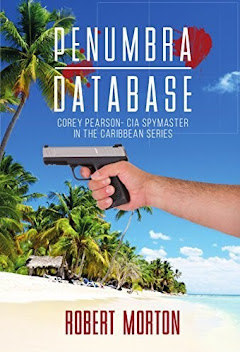 |
| Inside the Quantum War: A Russian Spy Walks Among Us—And America's Secrets Hang in the Balance |
In 2018, a Russian “banker” named Evgeny
Buryakov quietly took a desk in lower Manhattan. He wasn’t there to deal with
mortgages or savings accounts—he was SVR, a deep-cover spy sent by Russia’s
Foreign Intelligence Service. His mission? Get inside America’s academic
circles. Not just for fun facts about energy and tech. No, Buryakov was hunting
the crown jewels: the next generation of quantum computing research tied
directly to the NSA and CIA.
What looked like a white-collar desk job
was actually Moscow’s front-row seat to the future of cyber warfare. Along with
two “diplomats,” Buryakov tried to slip into university labs and mingle with
professors who held keys to U.S.-funded encryption projects. But the FBI was
watching—and so was an undercover agent who fed them fake white papers, a sting
operation straight out of a thriller. Actually, it felt eerily similar to a
scene from Quantum
Shadows, where CIA spymaster Corey Pearson
plants an asset inside UC Berkeley’s quantum lab to smoke out Russian
infiltrators posing as postdocs. Fiction, sure—but also frighteningly close to
reality.
See, places like MIT’s Lincoln Lab, the
University of Maryland’s Joint Quantum Institute, and the Chicago Quantum
Exchange aren’t just brainy think tanks—they’re working hand-in-glove with the
U.S. intelligence community. They’re trying to build the tech that keeps
American secrets locked down tight—even in a future where quantum computers can
slice through today’s encryption like tissue paper.
And here’s the thing: the Russians know
it.
They’re not coming with paratroopers or
submarines. They’re coming with USB sticks, front companies, job offers, and
students who ask too many questions. Their human operatives lurk in plain sight
at academic conferences and AI workshops. Their hackers are poking at research
servers and backdoors. They’re trying to steal quantum algorithms before the
U.S. can even finish building them.
Why? Because once quantum computing hits
critical mass, everything changes. Every secret operation. Every encrypted CIA
memo. Every digital ghost file locked away by the NSA. All of it could be
vulnerable. That’s why Fort Meade is on high alert. Deep inside the NSA, coders
and cryptographers are working on post-quantum encryption, sweating over new
algorithms vetted by NIST—the U.S. agency that sets the gold standard for
cybersecurity. They’re testing them inside academic labs—Stanford, UC Berkeley,
MIT—and praying the defenses go up before someone sneaks in through the back.
At the CIA, field teams are rolling out
quantum key distribution—communications tech that uses the laws of physics to
guard secrets. If someone tries to intercept a message, the message literally
destroys itself. Sounds sci-fi, right? It’s not. It’s our only shot at staying
ahead in a world where China and Russia are both racing toward quantum
supremacy.
And here’s where it gets real. In Quantum Shadows, when a
revolutionary encryption protocol is nearly stolen from UC Berkeley, Corey
Pearson doesn’t just chase clues—he battles the chilling realization that the
brightest minds in academia might be unknowingly aiding the enemy. That’s not
just a plot twist—it’s the same risk facing real labs today. Many of these
researchers aren’t spies, they’re idealists. But idealism is easy to
manipulate. That’s what foreign intelligence services count on.
Meanwhile, back in Russia, labs under the
FSB and GRU are scrambling to reverse-engineer every shred of quantum research
they can get their hands on. They don’t have to invent it—they just need to
steal it before it’s deployed. And if they do? The U.S. could lose its
advantage overnight.
Think about what’s at stake. Spy
satellites. Submarine routes. Agent names. Cyber defense frameworks. Election
security systems. All of it depends on code that may soon be breakable.
The NSA’s CNSA 2.0—a suite of encryption
algorithms designed to withstand quantum attacks—is a desperate attempt to
future-proof that code. But even the best math won’t matter if a spy walks out
of a lab with the source files. Or if a hacked university server gives Moscow a
quantum head start.
The risk isn’t hypothetical. It’s active. It’s now.
And still, the U.S. debates how much to
invest in securing this technology, how much to share with allies, and how
quickly to push academic labs to lock down. Meanwhile, adversaries like Russia
aren’t debating. They’re moving. Fast.
Quantum Shadows isn’t
just a spy story—it’s a warning disguised as fiction. In it, CIA operatives
have hours, not days, to stop a breach that could tilt the global balance of
power. That ticking clock? It’s not just in the story—it’s on us. Because the
next great war won’t start with missiles. It’ll start with stolen math. With
one compromised server. One unwatched conversation at a conference. One
algorithm leaked to a foreign lab.
That’s why Langley and Fort Meade are on
edge. The cold sweat, the long hours, the constant reevaluation of who’s in the
room and what they’re looking at. The truth is, we’re not ready. Not
completely. And Russia knows it.
If we lose the quantum race, we don’t just
lose tech. We lose the ability to defend everything we know. This isn’t about
paranoia—it’s about math. And espionage. And time.
Because in this world, whoever cracks the
quantum code, cracks the planet.
And the Quantum War? It’s already
underway.
Robert Morton is a member of the Association of Former Intelligence Officers (AFIO) and an accomplished author. He writes the Corey Pearson- CIA Spymaster Short Story series, blending his knowledge of real-life intelligence operations with gripping fictional storytelling. His work offers readers an insider’s glimpse into the world of espionage, inspired by the complexities and high-stakes realities of the intelligence community.





No comments:
Post a Comment